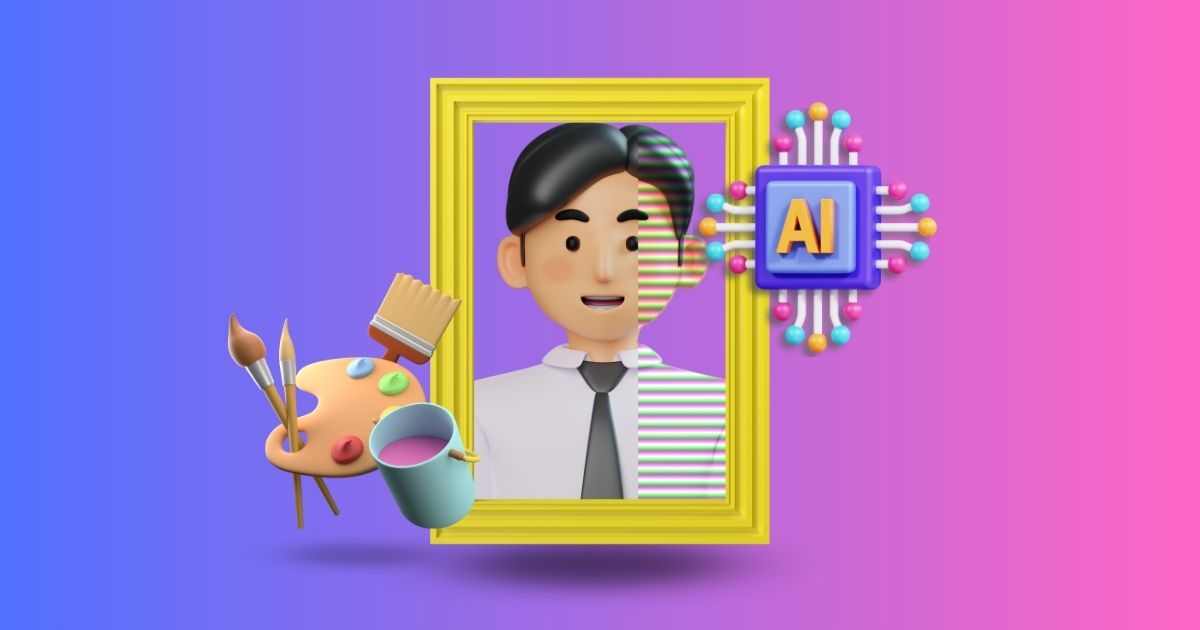
You’ve probably seen social media profile images seem so intricate, almost as if an artist created them.
In reality, it only takes a few minutes to make these images, thanks to AI portrait generator tools. These ingenious tools harness the power of artificial intelligence to produce visually striking portraits that captivate viewers. They can also elevate online personas to a whole new level.
In this guide, we’ll delve into the realm of using artificial intelligence portraits. We’ll check out available apps and also tackle issues attached to AI, such as privacy and consent and deepfake issues.
Understanding AI Portrait Generators
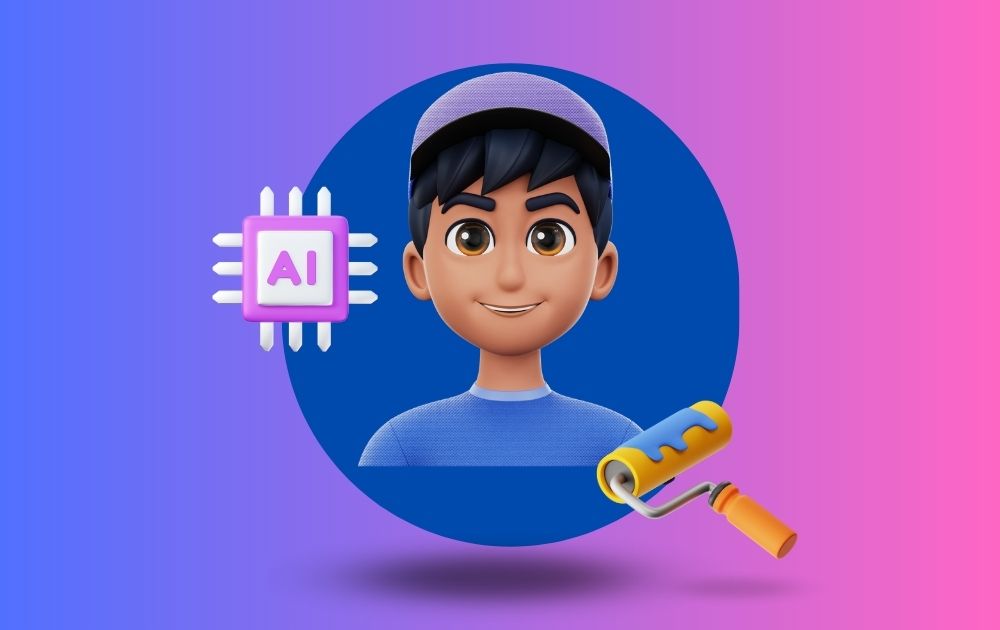
AI portrait generators are advanced apps that use deep learning and neural networks to create portraits. Just like AI UI generator tools, portrait apps may get art styles and other relevant data from existing databases.
An AI portrait generator can create a portrait either from existing photos or from scratch through a process called image synthesis. Here’s an overview of how AI portrait generators create portraits in each scenario:
- From Existing Photos. When creating portraits from existing photos, AI self-portrait generator tools employ a technique known as “style transfer” or “image-to-image translation.” The process involves two steps. The first is encoding, where the photo is fed into the AI portrait generator. The generator uses a pre-trained neural network to analyze and extract the essential features, and this info is transformed into a compact numerical representation known as a latent space vector.
The second process, decoding, generates a new image based on the latent space vector. The resulting image is a new portrait that shares similarities with the initial photo but may contain artistic styles.
Here are examples of portraits from an existing photo using PortraitAI:
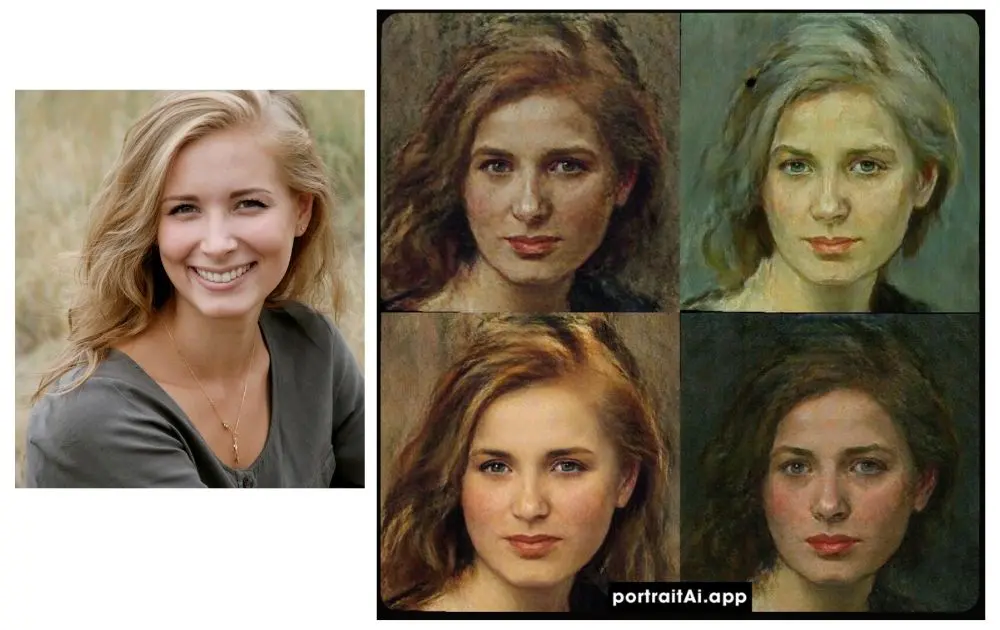
- From Scratch. When generating portraits from scratch, the AI portrait generator starts with a random or noise-based latent space vector. The process mainly involves a one-way generation process, with no original image to reconstruct. When using portrait maker online, you usually must use its text-to-image feature when making a portrait from scratch.
Here are examples of AI portraits from scratch via Canva. The prompt that I used was “Oil portrait of a woman smiling:”
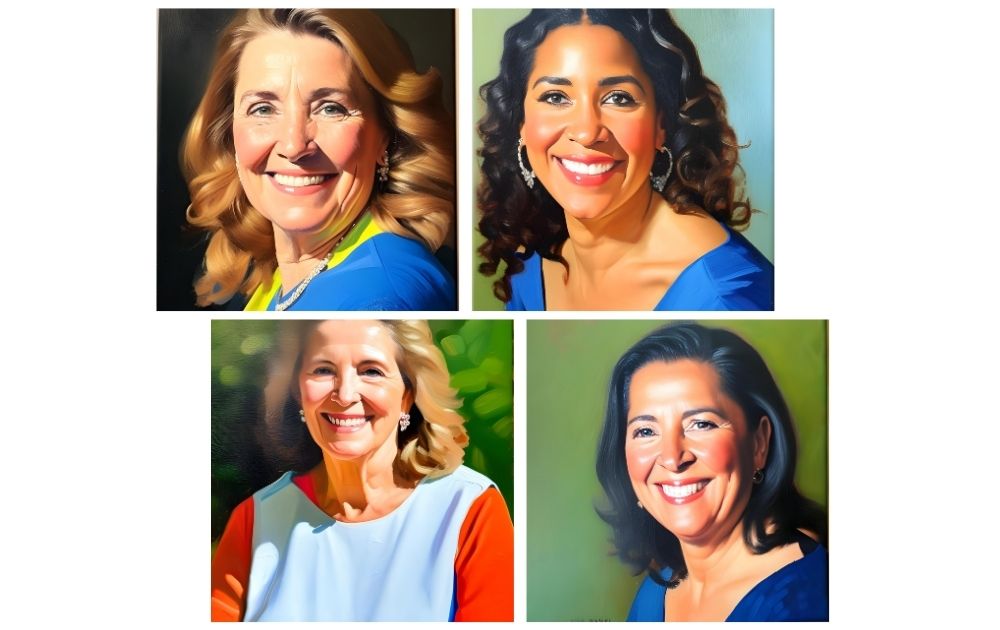
Popular AI Portrait Generator Platforms and Software
Here are a few AI portrait generators online:
- Dawn AI. This AI avatar generator online tool specializes in avatars. Users can quickly make avatars with prompts or by using their own photos. The platform offers an extensive selection of AI filters and effects, including Disney, anime, cinematic lighting, Kodak film, and more. It supports text-to-text and image-to-image AI image generation modes, and users can even perform face swaps with celebrities. However, the free edition includes a watermark on the generated avatars.

- PortraitAI. This website effortlessly transforms users’ selfies into various styles and creates AI portraits free of charge. Its standout feature is the user-friendly approach. In fact, you can create portraits here without having to log in. Compared to others, PortraitAI boasts faster results, providing eight different transformations within seconds after uploading a selfie. However, the website’s simplicity has limitations, including the lack of an edit function. Moreover, the results only mostly feature vintage styles with a watermark.
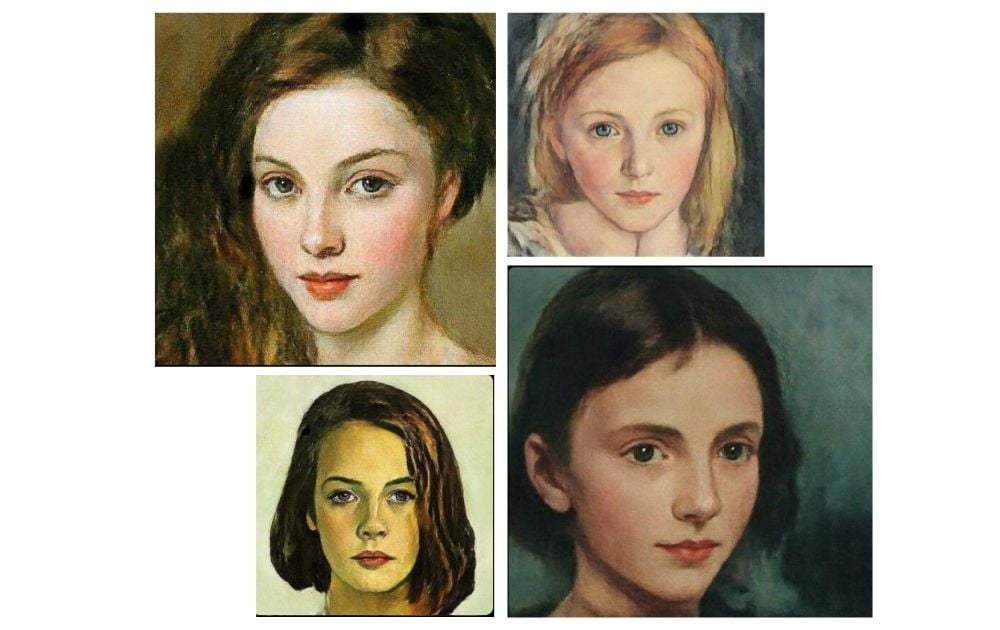
- ImgCreator.AI. Many users rave about this tool’s fast process, delivering results in just 20 minutes. It also offers a variety of creative styles and over 50 images to choose from, making it a hit among those looking for an AI fantasy portrait generator. ImgCreator.AI provides free access with certain restrictions. Initially, users receive nine free images to use on the platform.
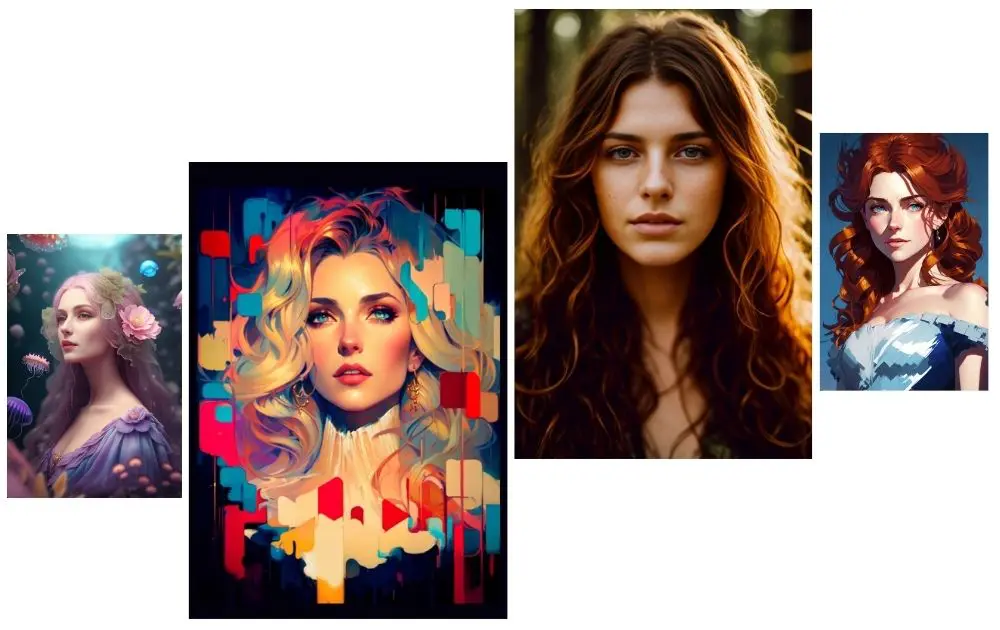
Tips and Techniques for Creating Striking AI Portraits 180
Creating striking AI portraits involves a combination of technical know-how and artistic finesse. These tips and techniques will help you take your creations to the next level:
- Choose High-Quality Input Images. The quality of your input image can largely affect the output. That said, it pays to select clear, well-lit, and high-resolution images with good facial visibility. Opt for images with diverse facial expressions and angles to create various portrait styles.
- Experiment with Different Styles and Filters. AI portrait generator tools offer a range of styles and filters to apply to your images. Don’t be afraid to experiment and try out various combinations. Explore classic art styles, modern aesthetics, or even fictional character representations. The more you explore, the more unique and captivating your AI portraits will become.
- Blend AI and Manual Editing. While AI portrait apps produce awesome results, manual touch-ups can add an extra layer of refinement. Use photo editing software to make subtle changes, like enhancing colors, removing distractions, or adding other elements to personalize your portraits further.
AI Art Ethical Concerns and Deepfake Awareness
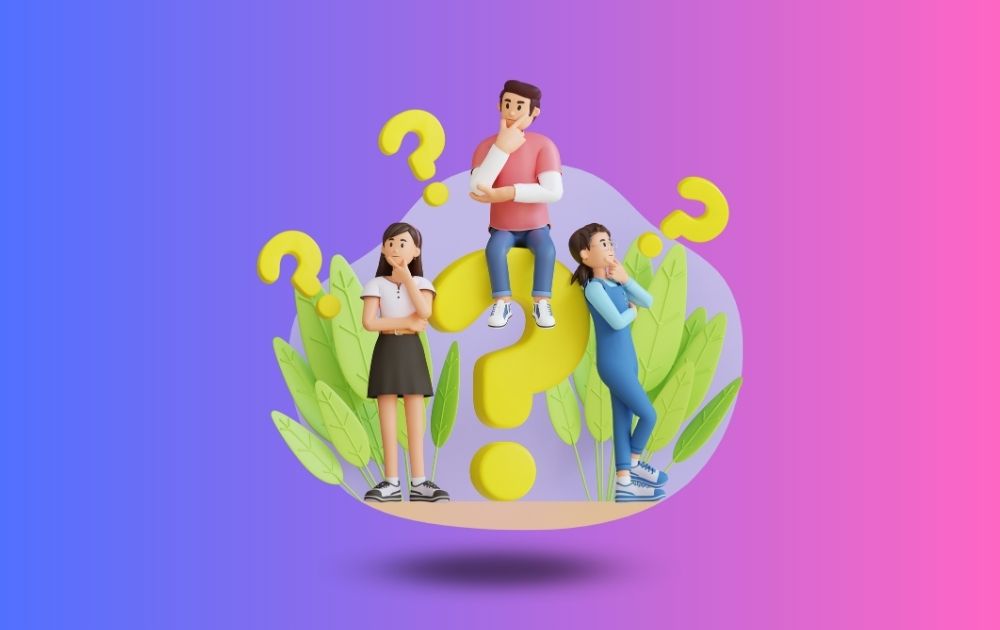
As with AI painting generator apps and other AI art tools, AI portrait generator apps can come with ethical concerns.
For instance, AI-generated art blurs the lines of authorship, making it challenging to attribute creations to specific persons or algorithms. As a result, it raises questions about the ownership and copyright of AI-generated artworks.
While on the topic of AI, it’s also crucial to tackle deepfake awareness. Deepfakes are AI-generated media that convincingly alter or superimpose images, videos, or audio to depict events that never happened or to manipulate existing content.
While deepfakes have diverse applications, including entertainment and visual effects, they have also been misused for malicious purposes, leading to concerns about their impact on society and individuals.
Deepfake technology can be used to create non-consensual explicit content, violating individuals’ privacy and consent. It could also harm individuals by spreading false information can lead to harassment and bullying.
The Lowdown
AI portrait generator tools undoubtedly provide remarkable tech for entertainment purposes, enabling users to create portraits swiftly.
However, their usage raises significant ethical concerns, including potential biases, privacy infringements, and the risk of deepfake manipulation. If you’re concerned about these issues, you can turn to another option: digital art services by human designers.
For instance, our designers here at Penji ensure responsible and authentic artwork, adhering to ethical guidelines. They also bring a unique touch to their pieces, considering cultural sensitivities, representation, and personal storytelling.
Here are examples of digital portraits done by our awesome designers:
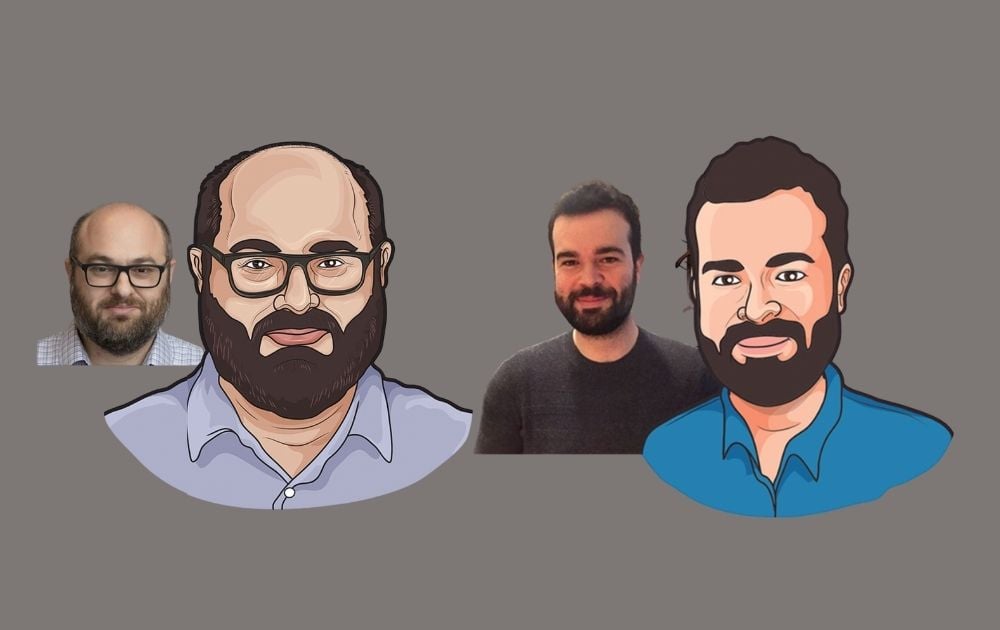
Sign up with Penji and get a high-quality interface created by the world’s top 2% creatives.
About the author

Carla Deña
Carla is a journalist and content writer who produces stories for both digital and legacy media. She is passionate about creativity, innovation, and helping small businesses explore solutions that drive growth and social impact.










